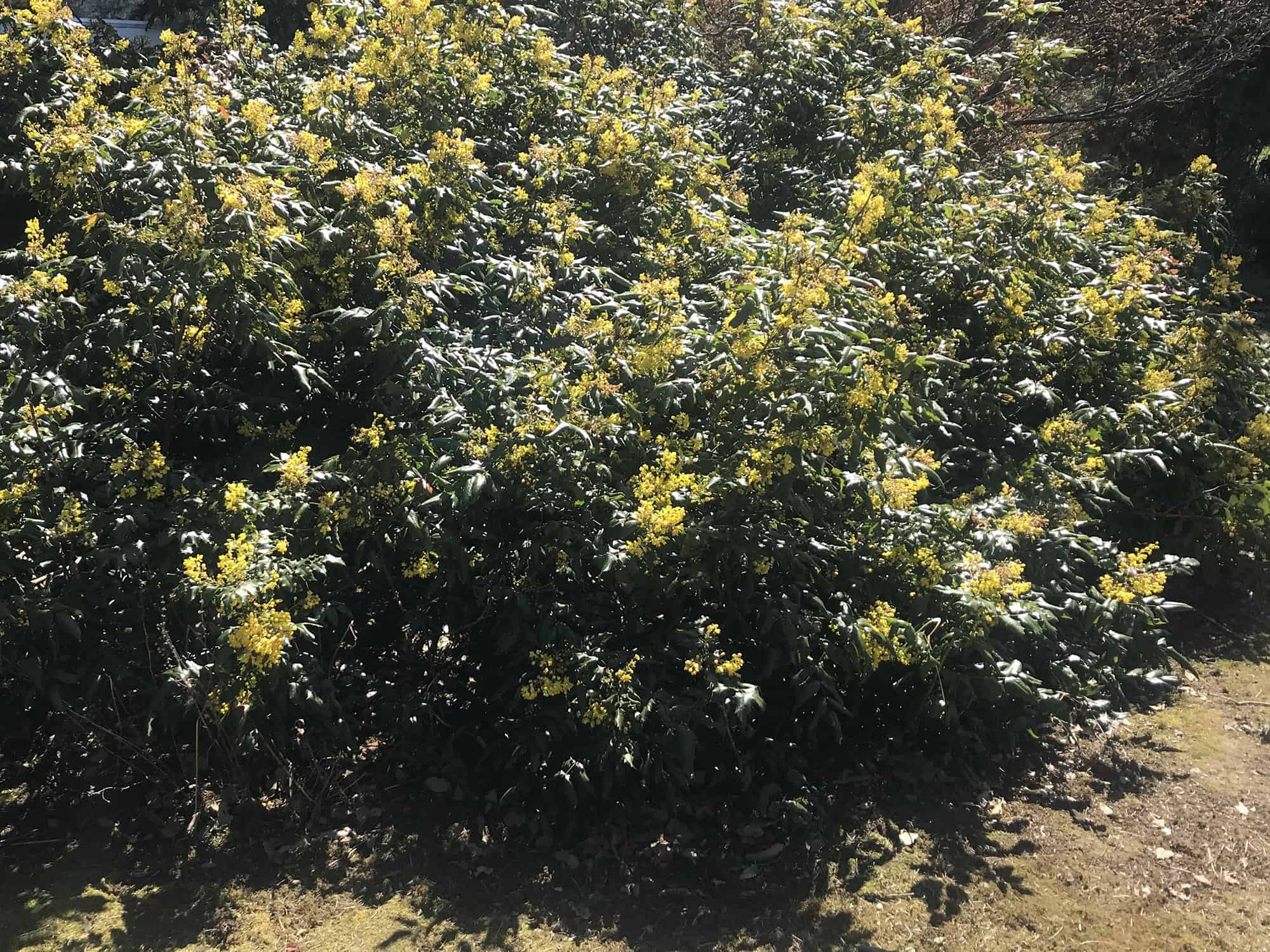| Weight | N/A |
|---|---|
| Dimensions | N/A |
| Botanical Name | Mahonia aquifolium |
| Zone | 4-9, hardy to -20°F |
| Soil | Thrives in loamy soil, tolerates deep clay and sandy soils |
| Light | Half to full sun |
| Pollination | Self-fertile |
| Years to Bear | 1-2 |
| Form | Strong upright branching form, can spread by underground runners |
| Height | 6-9 feet |
| Spread | 3-6 feet |
| Spacing | 3-6 feet or grow as a hedge |
| Bloom | Large clusters of small bright yellow flowers bloom in very early spring for several weeks |
| Ripening Time | Small purple berries ripen in late summer/autumn |
| Fruit | Small purple berries in clusters all over the plant are quite tart with a single seed in each fruit, excellent for jam, important food for wildlife |
| Pollinator Friendly | Yes, first spring bloom for many pollinators |
Oregon Grape
$10.00
Our tall Oregon Grape (Mahonia aquifolium) comes from exceptionally strong mother plants on our farm. These can easily grow upwards of 15′ tall and wide, if not kept pruned.
Allowing them to grow tall and sprawling makes for amazing habitat for songbirds and other small creatures. The berries are plentiful and provide exceptional wildlife food, and the sharp pointed pokey leaves deter most would-be predators.
Oregon Grape is our earliest flowering shrub in spring, filling the air with clouds of honey sweet scent which attract all types of native and domestic bees.
Indeed, blooming some years as early as the first week of March, one can detect the bushes by the scent and sound of the buzzing insects feeding in the flowers before seeing the bush around the corner of a building or over a rise in the hills.
It is an excellent honey bee plant, providing health benefits to bees just as it does to all wildlife and humans.
The inner bark of the plant is a brilliant yellow, particularly below the ground in the long root runners and can be harvested for an herbal cold and flu remedy of excellent quality. Many people simply cut and strip lower pieces of branch and attached runner root, dry and cut them into small cylindrical lozenges to tuck under the tongue and suck on when feeling the onset of a cold or flu. We have used this method for years with excellent results.
Oregon Grape is a member of the Berberidaceae or Barberry family of plants. These plants contain the alkaloid berberine, found most notably in another member of the family, goldenseal (Hydrastis canadensis), which now an endangered plant in much of North America due to its popularity as an herbal healer.
Classically, this plant family is well known for its support of a healthy liver, cleansing and healing of a sluggish digestive system, and other chronic conditions from sore throat to fungal infections.Native to the PNW, native peoples are known to have employed it in restoration of health in those suffering from a general lack of energy and vitality.
It has recorded medicinal uses all over the world going back centuries and has no known harmful effects.
Recently, Oregon Grape has been recommended as a replacement for goldenseal to aid in reducing the pressure on that endangered herbal medicinal plant.
Here are a couple of excellent resources on varying herbal uses of Oregon Grape:
https://permies.com/t/152721/kitchen/Oregon-Grape-Root-Mahonia-aquifolium



Reviews
There are no reviews yet.